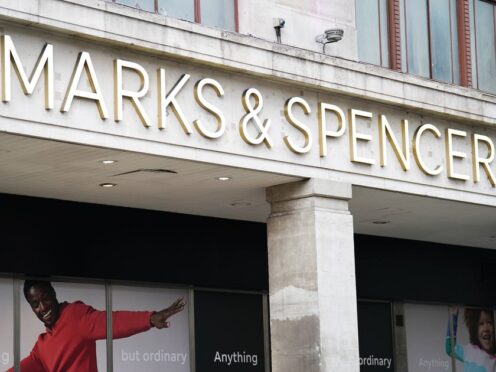
The government “misunderstood and misapplied” planning rules when it blocked Marks & Spencer’s plans to demolish one of its flagship London stores, the High Court has heard.
M&S wants to flatten and rebuild its store in Oxford Street, claiming the redevelopment is “of fundamental importance” to the future of London’s West End.
The plans were blocked by Levelling Up Secretary Michael Gove last summer, who said the building should be refurbished rather than demolished and that demolition would negatively impact nearby heritage assets, including the Grade II* listed Selfridges store directly opposite.
The company has brought legal action against the government, Westminster City Council and Save Britain’s Heritage over the decision, with its lawyers telling a hearing in London on Tuesday that Mr Gove’s “unusual” decision should be quashed.
The government and Save Britain’s Heritage are resisting the challenge, claiming Mr Gove was entitled to make the decision he did.
M&S applied to the council in the summer of 2021 for permission to demolish Orchard House, its store in Oxford Street, and replace it with a nine-storey building that would include retail space, a cafe, a gym and an office.

Mr Gove said in June 2022 that he would decide on the application rather than the council, which supported the plans along with the Greater London Authority.
But he refused planning permission in July 2023, overruling a government planning inspector who gave his approval to the plans in February last year.
The inspector, David Nicholson, had said that the building was not “suited to meeting the needs for the site” and that “meaningful refurbishment” was “unlikely”, meaning demolition was the only option.
Mr Nicholson also said that blocking the plans would likely lead to the store closing, which would cause “terminal” harm to the “vitality and viability of the area” and meant the benefits of the plans outweighed any harmful effects.
But while Mr Gove acknowledged it was unclear if there was “a viable and deliverable alternative” to demolition, there was no “compelling justification” for it.
In written arguments, Paul Shadarevian KC, representing the Department for Levelling Up, Housing and Communities, said: “The Secretary of State was entitled to say that in the circumstances of this case, there should be a strong presumption in favour of reusing buildings.”

He continued: “It is abundantly apparently that the Secretary of State both understood the inspector’s conclusions and gave adequate reasons for disagreeing with them.”
But in his written arguments, Russell Harris KC, representing M&S, said that this was a “legally faulty misunderstanding” of national planning policy and that “no such presumption” in favour of reusing or refurbishing buildings existed.
He also said that if demolition was not permitted, the extent of the necessary refurbishment could create the same or higher carbon emissions, telling the court on Tuesday that the store “would close” if left in its current form due to it “significantly undertrading”.
The barrister told the court: “There is nothing more here than a general positive encouragement of the conversion of existing buildings, which itself is entirely different from the wholesale, deep refurbishment which is at issue in this case.”
He added: “It has nothing that could be described as a presumption, let alone a strong presumption.”
The hearing before Mrs Justice Lieven is due to conclude on Wednesday, with a judgment expected at a later date.

Enjoy the convenience of having The Sunday Post delivered as a digital ePaper straight to your smartphone, tablet or computer.
Subscribe for only £5.49 a month and enjoy all the benefits of the printed paper as a digital replica.
Subscribe